Introduction
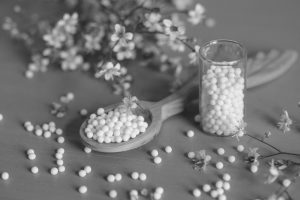 A significant aspect of homeopathic treatment involves the use of potentised remedies, commonly referred to as ‘homeopathic remedies’. The production process of these remedies was established by the founder of homeopathy, who aimed to create remedies that are safe. The potentisation, or preparation of homeopathic remedies, involves clearly defined ratios of dilution and shaking, as well as stringent quality standards.
A significant aspect of homeopathic treatment involves the use of potentised remedies, commonly referred to as ‘homeopathic remedies’. The production process of these remedies was established by the founder of homeopathy, who aimed to create remedies that are safe. The potentisation, or preparation of homeopathic remedies, involves clearly defined ratios of dilution and shaking, as well as stringent quality standards.
In addition to the manual production of potentised remedies, machines were eventually developed to facilitate this process. Unfortunately, some machines and methods have been developed that do not meet the strict requirements for producing potentised remedies.
Simon Nicolaievitch Korsakov must also be specifically mentioned, as he devised a method that made the storage and shipping of remedies simpler and better, and also made the production of remedies cheaper and more efficient.
Origin of the preparation of homeopathic remedies
The method of preparing remedies used by homeopaths is best explained through history. Hahnemann, the founder of homeopathy, realized that common medical practices of his time did not promote the healing process. Examples include bloodletting, mercury treatments, and colon cleansings. Due to this insight, he stopped working as a doctor in 1784 and started translating books. This decision, which reveals much about Hahnemann’s character, was significant because he had a large family to support, and he earned more as a doctor than as a translator.
 It is important to mention that Hahnemann was not a translator as we know today. He frequently added critical remarks to his translations and corrected points that, according to him, were incorrect in the original. For instance, in 1790, he translated a book by William Cullen. While translating Cullen’s Materia Medica, he read that quinine was used to treat malaria because it tasted bitter. Hahnemann was dissatisfied with this explanation, as other bitter substances did not help with malaria. He then decided to test quinine on himself and unexpectedly developed symptoms similar to those of malaria, such as periodic fever attacks. He wondered if there was a correlation: could a medicine that caused certain symptoms in a healthy person cure those symptoms in a sick person? Due to his critical nature, Hahnemann thus conceived the principle of simillimum.
It is important to mention that Hahnemann was not a translator as we know today. He frequently added critical remarks to his translations and corrected points that, according to him, were incorrect in the original. For instance, in 1790, he translated a book by William Cullen. While translating Cullen’s Materia Medica, he read that quinine was used to treat malaria because it tasted bitter. Hahnemann was dissatisfied with this explanation, as other bitter substances did not help with malaria. He then decided to test quinine on himself and unexpectedly developed symptoms similar to those of malaria, such as periodic fever attacks. He wondered if there was a correlation: could a medicine that caused certain symptoms in a healthy person cure those symptoms in a sick person? Due to his critical nature, Hahnemann thus conceived the principle of simillimum.
To determine the effect of remedies, he had to test them on people, which is called a proving. Briefly, a drug proving serves to discover which combinations of symptoms can be cured with a specific remedy. This is done by administering the remedy to participants in such a test. Hahnemann focused primarily on medicines that were commonly prescribed at that time. However, there was a problem: these were toxic in the given doses and caused many side effects.
Of course, he wanted to avoid this, so Hahnemann diluted the remedies. Initially, this was relatively simple: he took half of a certain amount of the substance and observed the effects. But the substance he wanted to investigate was still toxic or had unpleasant side effects. Hahnemann continued to reduce the dose of the remedies he wanted to test. At a certain point, however, this became difficult because the amounts were already quite small. As a chemist, Hahnemann knew that reducing the dose is best done by dissolving the substance in a solvent. This makes it easier, but especially more precise, to reduce a specific dose of a raw material.
Hahnemann shook his solutions to accelerate the dissolving process. Many people are familiar with this concept when, for example, you want to add milk or sugar to tea or coffee. You could wait for the milk or sugar to naturally distribute well through the drink, but stirring accelerates the mixing.
Hahnemann was not only critical but also precise. This is evident from the fact that he meticulously recorded the entire process of diluting and shaking so that it was possible to precisely replicate a remedy afterward. He did not know in advance whether a particular aspect of the preparation of a remedy would have an effect, but by precisely describing all his actions during the preparation of the remedies, others (even after his death) could replicate the remedies exactly as he did.
There is another characteristic of Hahnemann that was important in this context, namely that he relied on his unbiased observations rather than being influenced in advance by the theoretical insights of that time. Based on his unbiased observations and experiments, Hahnemann concluded that medicines could be diluted to the extent that no molecule of the original substance was present, while the healing power remained or even enhanced. He was guided by what he saw happening in practice rather than a theory. Through his experiments, Hahnemann discovered that the combination of shaking and diluting releases a certain effect of a remedy and remains present in the solvent.
Thus, you see that the specific method of preparing remedies did not come out of thin air or based on a certain theory. The method is a logical consequence of Hahnemann’s aim to solve a practical problem.
The concept of potency
The process of diluting and shaking is referred to as potentiation within classical homeopathy. The degree of dilution and shaking is precisely recorded and serves to replicate the remedy as accurately as possible. There are different ratios of dilution and shaking. These ratios are denoted with a letter such as C, D (or X), Q (or lm). It would probably go too far to discuss the details of preparing the remedies, but in broad terms, it goes as follows:
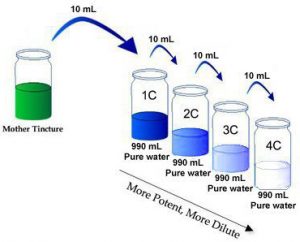 1. The raw material of the product that will be made is collected and checked for purity and quality.
1. The raw material of the product that will be made is collected and checked for purity and quality.
a. A soluble remedy is placed in alcohol for a certain period to make what is known as a tincture.
b. A remedy that is barely soluble is triturated. Trituration means that it is rubbed with lactose in a mortar. The ratios between substance and lactose are fixed, and this process is repeated several times until the result is soluble.
2. The substance is dissolved in a liquid with a fixed ratio. For D potencies, this is 1:10, for C or K potencies it is 1:100, and for Q (lm) potencies it is 1:50,000 (this dilution for a Q potency is not entirely correct, but for the purpose of this article, we will assume it is correct).
3. Then, this solution is shaken a fixed number of times. The result is step 1.
4. From the product of this step, a quantity is mixed with the solvent according to the fixed ratio described in point three. Then, it is shaken again, and so on.
A 6D potency thus consists of six steps where each step involves 1:10 dilution and is shaken 10 times.
This is a simplified overview of the different potencies.

The remedies are not made in a ‘strength’ but in different strengths (potencies). To make it convenient, fixed potencies are available. The homeopath can order these from the manufacturer or pharmacy. These steps are indicated with (partially) Roman numerals. A potency that has been potentised 30 times according to the ratios of K (see the table above) is thus denoted as 30K. But if the same remedy is prepared in 1000 steps, we note this as MK. Due to costs, potencies above 200K are almost always prepared according to the K (Korsakov) method.
History of preparing potentised remedies
Hahnemann made the remedies by hand in his time. He described in detail and very precisely how he made the remedies. The descriptions were so detailed that he even described using a large leather-bound book to shake the bottle he used to potentise the remedies.
It was known at some point that the homeopath Jenichen (178-1849), who was used to physically demanding work as a blacksmith, specialized in hand-made potentised remedies where he used a lot of force.
 Later, machines were developed to speed up the process and to be less dependent on hard labor by people. For example, Carroll Dunham (1828-1877) bought a mill and converted it into a machine for shaking the bottles.
Later, machines were developed to speed up the process and to be less dependent on hard labor by people. For example, Carroll Dunham (1828-1877) bought a mill and converted it into a machine for shaking the bottles.
Today, modern manufacturers use machines that automate the entire process. This makes the remedies cheaper and reduces the chance of errors, thus maintaining consistent quality.
Unfortunately, there are also machines on the market that claim to make a homeopathic remedy without using the combination of shaking and diluting. Examples include a bioresonance machine, RM radionic potentiation machine, Dynamus RM, Bicom 2000, and similar machines. However, these machines cannot make potentised remedies because they require at least a raw material and a combination of diluting and shaking. Since it is not yet clear how homeopathic remedies work, it is also not possible to build machines that do not use a raw material or the process of shaking and diluting.
We would also like to note that there are sometimes homeopaths who claim to make a remedy by writing the name of the remedy on a piece of paper and then placing a glass on it. It goes without saying that this is a nonsensical method that has nothing to do with making homeopathic remedies. We advise everyone not to be treated by homeopaths who work in this way.
Simon Nicolaievitch Korsakov
Simon Nicolaievitch Korsakov (178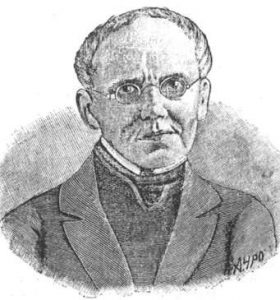 8-1853) made several developments that were important in the field of preparing potentised remedies. First, he came up with the idea of using one bottle instead of several bottles in the preparation of remedies. Hahnemann made remedies by transferring each dilution from one bottle to a new one. For example, making a 24C potency required 24 bottles. This was expensive and labor-intensive, also because the bottles also had to be thoroughly cleaned.
8-1853) made several developments that were important in the field of preparing potentised remedies. First, he came up with the idea of using one bottle instead of several bottles in the preparation of remedies. Hahnemann made remedies by transferring each dilution from one bottle to a new one. For example, making a 24C potency required 24 bottles. This was expensive and labor-intensive, also because the bottles also had to be thoroughly cleaned.
Korsakov solved this by not transferring the liquid to a new bottle but by letting the excess liquid run out of the bottle and then refilling the bottle. The idea is that a fixed amount of liquid remains in the bottle (depending on the size of the bottle). If you know that volume, then you also know how much you need to add to the bottle to achieve a certain dilution. The advantage was that only one bottle was needed for the entire process. The Korsakov method is indicated by the letter K. So, a 24C made with 24 bottles, while a 24K is made using one bottle. The potency is the same, but the preparation differs slightly.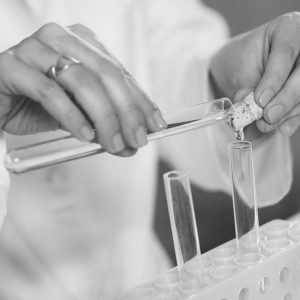
Second, Korsakov devised a method where the liquid was dripped onto sugar pellets so that the liquid would seep into these granules. This too was a practical advance. Before the invention of Korsakov, liquids had to be stored and sometimes shipped. Especially during transport, this was difficult. In the early days of homeopathy, transport often involved horse-and-wagon, which meant that the liquids were shaken. This could theoretically lead to a change in potency. By allowing the remedies to soak into sugar pellets, the remedy was less sensitive to shaking and cheaper and easier to manage and transport. The lactose pellets are thus sprinkled with the potentised solution.
Requirements for making potentised remedies
There are several requirements for preparing remedies. We will highlight the main points below.
Of course, a remedy must be clean. Not only from a hygienic perspective but also because small impurities can lead to a slightly different remedy. If a plant is used as a basis for a remedy, then it is important that there are no other plants, mud, or insects near the plant, as this could change the remedy a little.
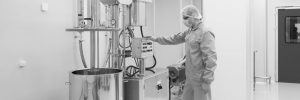 When preparing remedies, always the same parts are used. For example, if only the roots of a specific plant are used the first time, then the roots of this plant are used in subsequent times when making a remedy. In rare cases, it is also described that certain raw materials should only be collected during a specific season or at full moon. Perhaps this was originally done with certain ideas in mind, but nowadays it is also a matter of accurately assembling remedies. Plants can change during the year. At certain times, they may have more or less plant sap, or more or less leaves, etcera. To prevent such influences from playing a role, the same instructions as at the first preparation of the remedy are still followed today.
When preparing remedies, always the same parts are used. For example, if only the roots of a specific plant are used the first time, then the roots of this plant are used in subsequent times when making a remedy. In rare cases, it is also described that certain raw materials should only be collected during a specific season or at full moon. Perhaps this was originally done with certain ideas in mind, but nowadays it is also a matter of accurately assembling remedies. Plants can change during the year. At certain times, they may have more or less plant sap, or more or less leaves, etcera. To prevent such influences from playing a role, the same instructions as at the first preparation of the remedy are still followed today.
The idea of being consistent is also carried through in the production method. When a raw material has undergone a certain treatment (for example, leaves must first be bruised or a certain substance heated), it is important that these steps are also fully completed when preparing new remedies. Even specific instructions for preparing remedies have been kept the same since the beginning of homeopathy to ensure that the remedies are exactly the same. This is important because the description of the remedies (materia medica) must remain the same.
The problem with the concept of ‘homeopathic remedies’
 It is customary to use the term ‘homeopathic remedies’ when referring to remedies prescribed by a homeopath to patients. You see this term in stores, on websites, in magazines, and most homeopaths also use it. However, strictly speaking, it is not correct, and we will also explain why.
It is customary to use the term ‘homeopathic remedies’ when referring to remedies prescribed by a homeopath to patients. You see this term in stores, on websites, in magazines, and most homeopaths also use it. However, strictly speaking, it is not correct, and we will also explain why.
The word homeopathy consists of the terms ‘homeo’ and ‘pathos’. ‘Homeo’ means ‘similar’, and ‘pathos’ means disease. The concept of homeopathy involves healing with remedies that evoke similar symptoms in a healthy person as those present in the person who is sick and you are trying to heal.
A homeopathic remedy is thus actually a remedy that belongs to a specific sick patient. It is tailored to an individual patient. Therefore, a different remedy is needed for each patient, depending on the totality of symptoms that the respective patient exhibits. Strictly speaking, you cannot generally speak of homeopathic remedies because without knowing the symptoms, it is not clear whether a remedy is homeopathic for the respective patient.
Therefore, it might be more precise to speak of potentised remedies instead of homeopathic remedies. But because the term homeopathic remedies is already quite ingrained, it is not practical to start using this word differently. But hopefully, after reading this article, it is clear what is precisely meant by it.
Homeopathic remedies and training to become a classical homeopath
During training, you learn extensively how remedies are made and what requirements they must meet. It is important that you know what tools you are working with. But we do not teach you how to make potentised remedies yourself because it is better to leave that to specialized companies. Making a potentised remedy is labor-intensive, requires expensive machines, and involves a precise production process. Because it is much more convenient and practical to buy remedies from reliable producers of these remedies, we prefer to spend the time on things you directly need to practice your profession.
We also explain which methods of preparing homeopathic remedies are not suitable and you should actually avoid because they hinder the quality of your treatment.
Of course, we also give you advice on how to easily and efficiently manage your remedies inventory.
Sources
- Richard Haehl – Life and works of Samuel Hahnemann
- George Vithoulkas – Science of homeopathy

